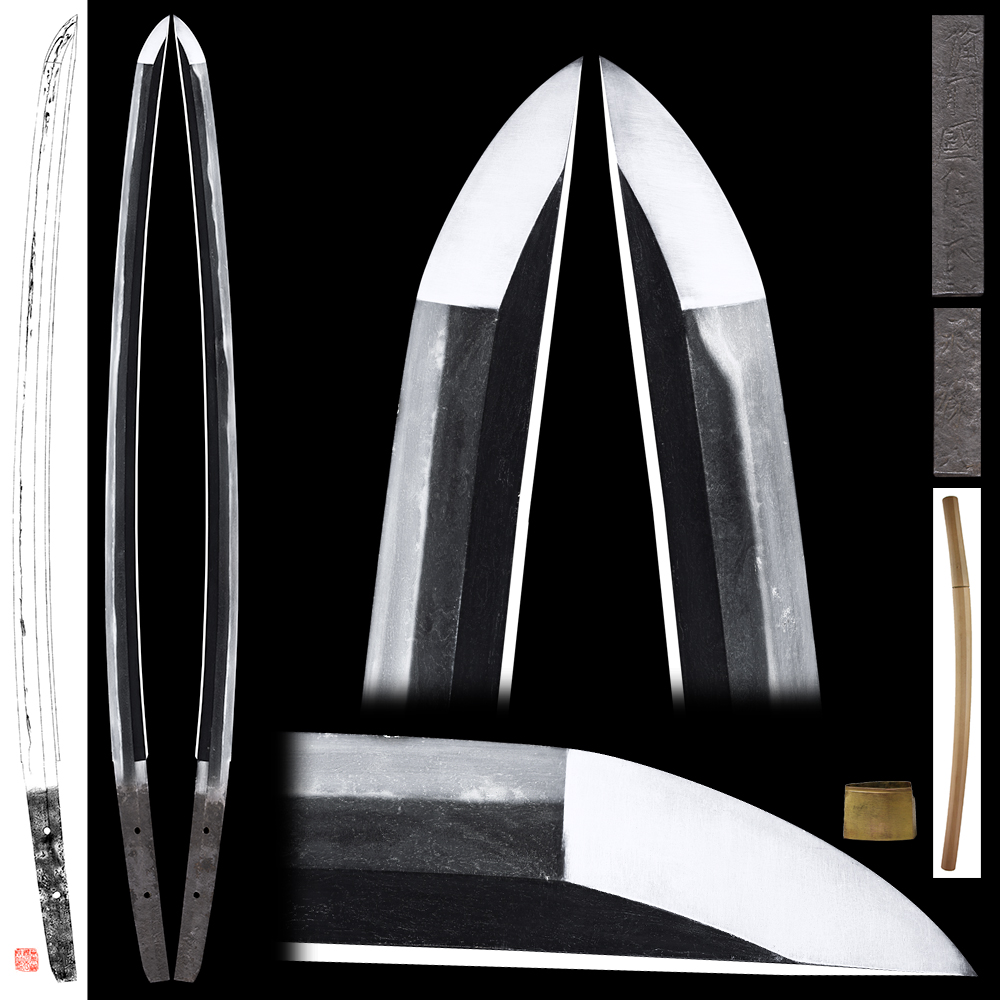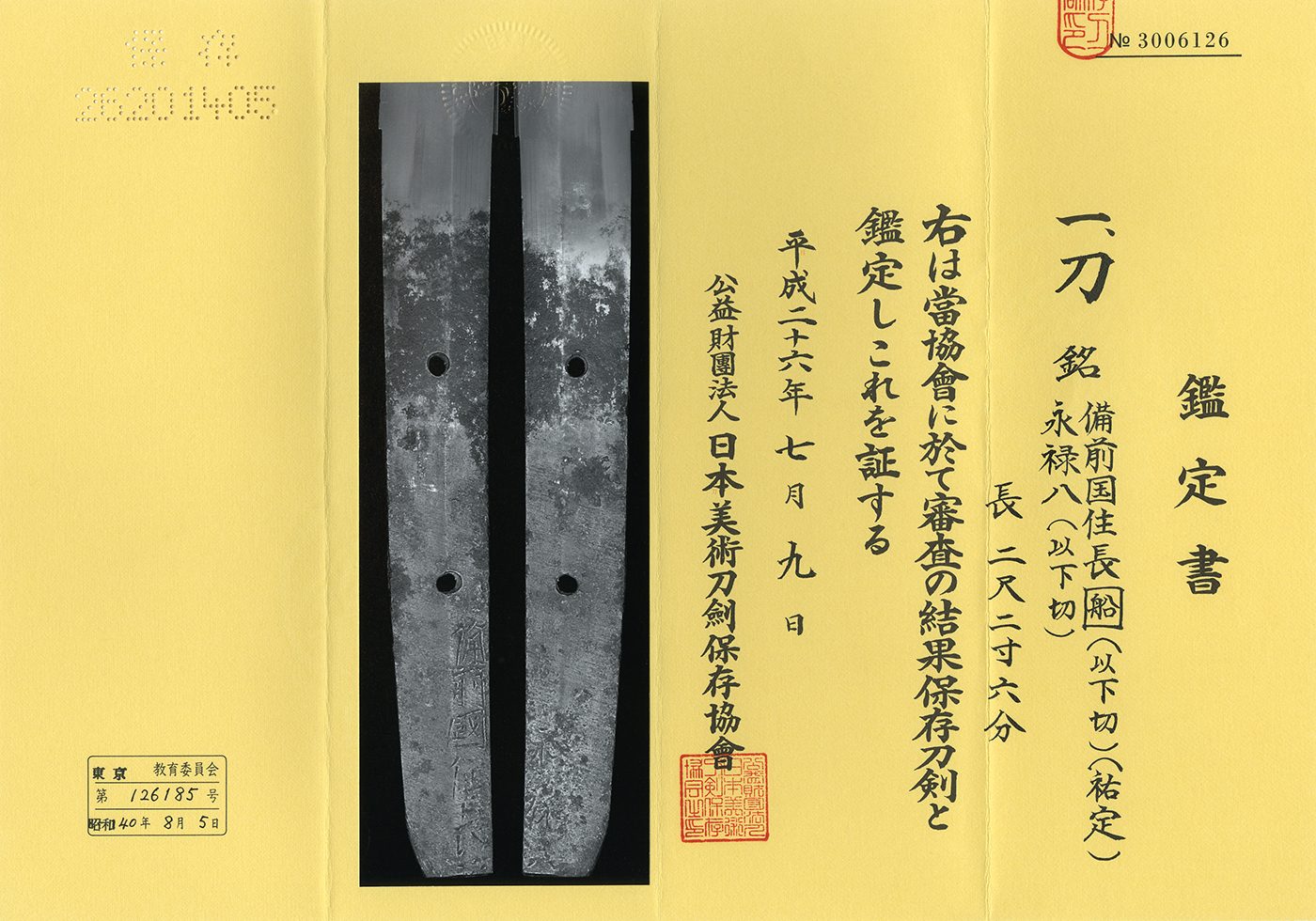Katana: Bizen Koku Ju Osa
2017/01/04
Katana in Shirasaya (NBTHK Hozon Paper)
Signature: Bizen koku Jyu Osa (signature cut off for shortening from here)
Eiroku (signature cut off for shortening from here)
The blade is polished.
Habaki : Gold foiled copper single Habaki
Blade length : 68.2 cm or 26.85 inches.
Sori : 2.2cm or 0.87 inches.
Mekugi: 2
Width at the hamachi : 3.25cm or 1.28 inches.
Width at the Kissaki : 2.5 cm or 0.98 inches.
Kasane : 0.76 cm or 0.30 inches.
Era : Late Muromachi period Eiroku era.
Shape : The blade has Suriage Machiokuri (cut shorten) tang. Wide and thick blade with long Kissaki.
Jitetsu : Itame-hada and Mokume-hada mixed with Jinie attach.
Hamon : Nie-DekiSsuguha with Koashi working. Boshi is Midarekomi style.
Special feature : Sukesada is a school of swordsmiths that were very active during early to late Muromachi period.
This Bizen school has lasted until late Edo period. Sukesada blades are mass producted around Muromachi period.
The swords forged by Sukesada were even exported to Ming dynasty in China and Goryeo in Korean Peninsula.
Sukesada blades are discriminated as 3 ranks. Signature engravement starts from ‘Bishu’ are mass producted. High ranking blade has ‘Bizen’ signature engraved. And the blades having secular name of the swordsmith whom forged on tang of the blades comes to the top ranking.
We don’t have any idea the words comes after ‘Bizen Koku Osa’ but the work is so magnificent. We are sure this is not mass producted and the blade is very healthy.
Historical background: Battle of Okehazama (June 1560) : Oda Nobunaga defeated Imagawa Yoshimoto having overwhelming margin of troops in this battle and established himself as one of the front-running warlords in the Sengoku period.
Battle of Okehazama is counted as one of the big three night warfare, and also big three surprise attack in Japan history.
NBTHK Hozon paper
Aoi Art estimation paper : whole Oshigata.




